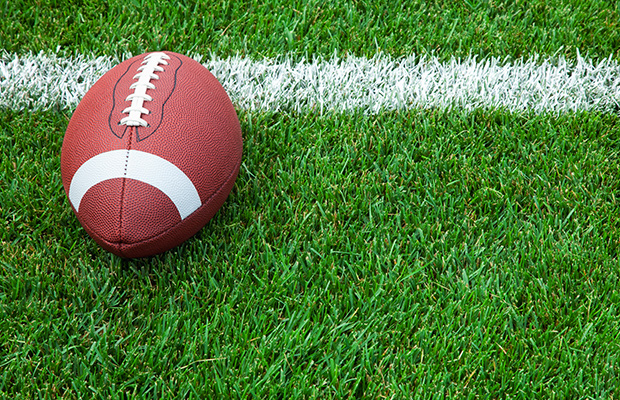
William Clark Sr.
June 29, 2010
Senator baffled by Obama’s view on La. oil
July 1, 2010It’s one of the biggest nightmares of any athlete – an ACL injury.
It’s an injury that used to be a virtual career death sentence for a player, but has since become a surgery, intensive rehab and then good as new scenario.
But what exactly is the ACL, and why is it one of sports’ most common injuries?
If it does bruise or tear, how exactly does it heal?
In this new series, SportsNet hopes to answer all of those questions, plus many more about the injury everyone knows, but no one wants.
In future weeks, we will detail other injuries that nag athletes in the Tri-parish area and worldwide.
Overview:
The anterior cruciate ligament (ACL) is one of four main ligaments inside the knee.
Located in the center of one’s knee, the ACL is critical for providing support for athletes when they are attempting their most daring feats like running, jumping and diving.
This crucial impact is why most people say they feel like their knees gave out on them when the tear occurs – the support base is gone.
The way a tear occurs is when the knee bends too far forward or backward, or too far to either side.
Unfortunately for athletes, a variety of different things can force that to happen, which is why it is such a common injury.
“This is an injury that can either be a contact or a non-contact injury,” said Shaun Duhe, the head athletics trainer at Nicholls State. “What I mean by a contact injury is someone might fall on the leg, or get hit from the front or the back … Non-contact injuries are the opposite. Those happen most often by a stop and a pivot. An athlete decelerates to stop, tries to turn in either direction, and then their leg gives out … Your body stops but your knee keeps going, so when you make that little twist, you pull your ACL right off the bone, basically.”
The troubling problem for athletes is that due to the ACL’s close proximity to the other major ligaments in the knee, what is strong enough to tear one ligament can tear them all in the same shot.
“Especially in football, you see guys get hit from the outside of the knee going in,” Duhe said. “So they will usually tear the ACL, then the MCL goes with it … There are several scenarios that see more than the ACL tear.”
Treatment and recovery:
When a full tear takes place, surgery is almost always required if the athlete wants to ever play again.
With the old ligament destroyed, where does the new ligament come from?
That varies, according to options provided by your doctor.
“There are four different things they do,” Duhe said. “One is they take the middle-third of your patella tendon and use that as the ACL. The other is they take part of your hamstring tendon and put that as the new ligament … The last two come from organ donors … They can take the patella tendon or Achilles tendon from the cadaver and use it as the new ACL.”
Just a day after surgery, rehab begins.
That is a change from the previous medical thinking of the 1970s and 1980s where athletes would be in a full cast for six weeks post surgery.
Duhe said that change in the recovery process is why more people are able to fully recover from the injury than before.
In the past generation of athletes, a torn ACL meant you probably never played again, and even if you did, you would almost never reach your athletic level prior to the tear.
“It has come a long way,” he said. “By the time you’d get out of your cast before, your knee was all stiff and you couldn’t move very well.”
Duhe said the new process begins immediately after surgery when doctors will work to decrease the swelling in the knee, while increasing the range of motion with light movement exercises.
“That’s the most important thing,” the trainer said. “Because if that doesn’t come back early, it sometimes doesn’t ever come back.”
The next phase of the rehab is strengthening the other muscles of the leg – especially the hamstring and quad muscles.
Being on crutches for 14-28 days, the other muscles sometimes weaken.
“The strengthening phase would take somewhere about three months,” Duhe said. “During that three month period, you’ll be working to just increase strength and stuff like that. Anytime you have some surgery, you’ll have some atrophy of the muscles … you want to combat that.”
Following the three-month strength training, athletes can begin jogging. From there, they can begin running and gradually doing cuts, before beginning their full athletic regimen in six to eight months.
Duhe said the speed an athlete accelerates through the process depends on their progress during the rehab.
Competition usually begins again after 8-12 months for athletes in high school or college levels. Professionals might progress a little sooner, risking long-term damage.
“You hear a lot about the people who came back in three months or four months or whatever, but those are professional athletes,” Duhe said. “There are a lot of things that they do that aren’t really something you’d want to. They shoot themselves up with medicine and other drugs so they physically can’t feel it …
“With a high school or college kid, there’s not any sense in rushing through things when later on in life, you’ll have arthritic changes and all those types of things that those NFL and professional guys might have.”
Random facts and notable athletes who suffered the injury:
Because the ACL isn’t a muscle or a bone, doctors and trainers often debate whether measures can be taken to avoid this injury.
Duhe said some research has shown some things can possibly be done to prevent strictly the non-contact injuries.
“It’s still a little controversial about if it works, but I think it does,” he said. “There is some neuromuscular training that you can do, and a lot of jump training and plyometric stuff, and some different stretching exercises that you can do that are supposed to strengthen it … You can’t ever fully prevent someone from falling on your knee, though.”
Regardless of prevention techniques, women are eight times more likely to suffer a tear, and medical experts do not have an answer for that quagmire.
Listed are local and famous athletes to suffer the injury in their careers.
• Leslie Bourgeois
• Lardarius Webb
• LaBrandon Toefield
• Andrea Kelly
• Jerry Rice
• Tom Brady
• Carson Palmer
• Tiger Woods
• Deuce McAllister














